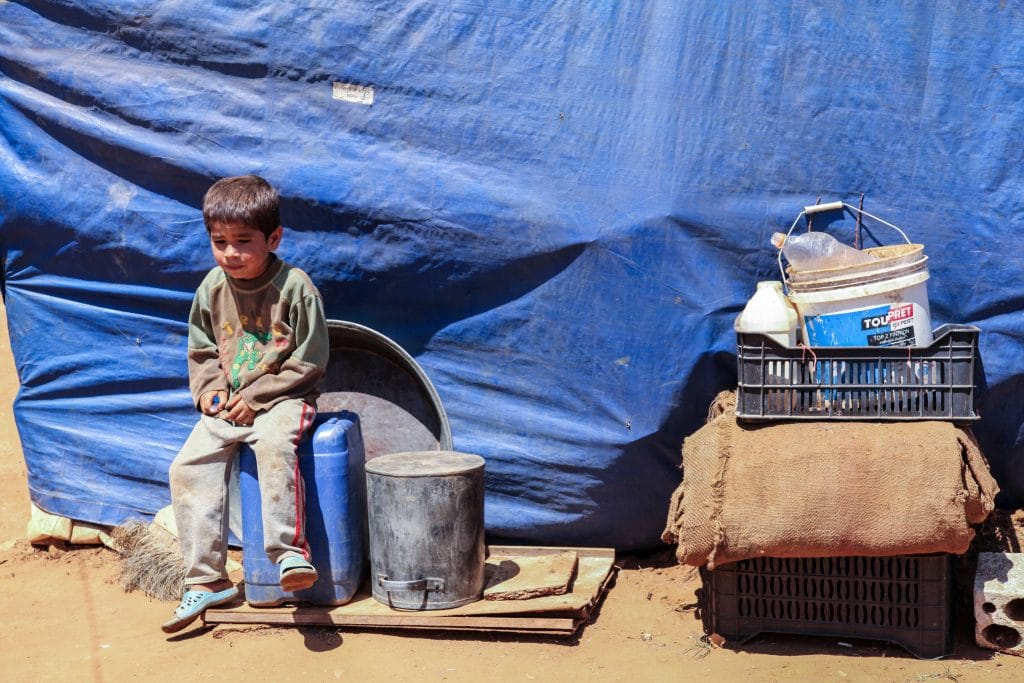Is Stalemate the least bad option in Syria?
Far beneath the surface of the Biden Administration’s understandable preoccupation with problems at home, and with China and Russia abroad, a quiet debate about its policy toward the never-ending Syrian crisis is simmering toward a conclusion. The basic question is whether to stay on the current inconclusive course, or opt for something different.
Private conversations with senior officials from interested parties indicate that the question has yet to be answered, leaving U.S. policy in limbo, or “autopilot,” until the review is completed and a decision is made. In fact, this uncertainty about American intentions is the one thing that all the major regional actors on this stage – Arabs, Israelis, Turks, and Kurds – can agree about right now.
After a decade of following the tragic Syrian conflict, in regular contact with all sides, my judgment – to my own surprise and dismay – is this: the decision should be mostly for more of the same, with just a few adjustments on the margins. This will not resolve Syria’s dire situation. It will, however, probably prevent it from getting even worse – which, amazingly, could actually happen. The focus here is on today’s most urgent diplomatic and security decision points. Other important, more medium-term issues – including the major humanitarian and political challenges in outlying areas like Idlib, Deir Ezzour, El-Tanf, Daraa, and Suweidah – will have to await a follow-up essay soon.
Related: Syrian Family Reunited Three Years Later in Greece
Right now, three new twists are pushing Syria a bit higher on the agenda. First is the upcoming “reelection” of Bashar Al-Assad for another seven-year term as president, in late May – once again, with solid Russian support. Second is the escalation in local clashes between the Kurdish-led Syrian Democratic Forces (SDF) and pro-regime militias in Qamishlo and other points in the east — but without any Turkish threats or interventions, despite the small-scale Kurdish successes so far. Third is a modest resurgence of Israeli air raids and apparent sabotage operations against both Iranian and regime targets in and around Syria – in one striking case, as retaliation for a possibly errant Syrian missile that hit perilously close to Israel’s Dimona nuclear reactor.
All three developments reinforce my grim prescription for staying the course. They tend to confirm two key propositions: First, the U.S. cannot count on Moscow to help with Syria. Second, the U.S. can, however, count both on Israel and on the SDF, in each case without too much risk of major escalation or negative spillover on other fronts. Let us look these angles in turn, with some unavoidable oversimplification for the sake of brevity.

Regarding Assad’s looming “reelection,” the American Ambassador to the UN, Linda Thomas-Greenfield, has already spoken out adamantly in the Security Council against this “illegitimate” exercise, in just the past few days. She was echoed by the European members. But she was opposed by Russia, in the latest blow to the decade-long illusion of driving a wedge between Putin and Assad.
This American position is the right one, even though Assad cannot now be dislodged. His regime is plainly as guilty of genocide against its own people as the Biden Administration now labels the Ottoman Empire, or the Chinese government. And in Assad’s case, there are no good countervailing reasons to swallow hard and accept him anyway.
Related: Another Fatal Crash Involving Tesla Car On Autopilot
The supposed humanitarian rationale for this is fatally flawed. Any sanctions relief, aid, or reconstruction projects would disproportionately benefit that murderous tyrant and his cronies, not the Syrian people as a whole – and certainly not the 6 million Syrian refugees he drove out of their own country, whose voluntary return is inversely related to Assad’s personal grasp on power. If the U.S. wants to keep helping Syria’s people, it should maintain its lead role as donor to those refugees. And it should consider at least one pertinent policy shift: lifting sanctions, and promoting trade and investment, in those large parts of the country outside Assad regime control – whether under Turkish, Kurdish, or other auspices.

Sadly, the Arab League and several individual Arab states are moving toward restoration of some contacts with Damascus. Even Israel may be contemplating parallel moves, if only behind the scenes. But that is no reason for the U.S. to follow in their faltering footsteps. Far from driving a wedge between Assad and Iran or Russia, that path risks further entrenching their presence in Syria. Moreover, Assad’s rule risks further prolonging the pretext for recruitment there by ISIS, Al Qaida, and other jihadi groups. For all these reasons, “rehabilitating” Assad would, in Talleyrand’s famous phrase, be “worse than a sin – it would be a mistake.”
Even if the drive to oust Assad has lost most of its momentum for the time being, two other aspects of U.S. policy in Syria are showing more signs of success, at very low cost. The current policy review should therefore opt for sustaining them. First is continued modest support for the Kurdish-led Syrian Democratic Forces in the northeast. The American effort to “unify” the rival Kurdish and other groups there has stalled. And some key cities in that remote part of Syria, like Raqqa and Deir Ezzor, remain contested. But in the past few weeks, the SDF has established firmer control than ever before over the major city of Qamishli, after skirmishes with what one senior commander called the “Iranian-backed,” pro-regime National Defense Force militia there.
Equally important, Turkey’s reaction to this has been very restrained. That is not to say Turkey supports U.S. policy in Syria; on the contrary, pressed to give examples of current cooperation with Ankara, one American official cited the cases of Afghanistan and Ukraine, rather than Syria, or any other Mideast issue. Indeed, Turkey has actively impeded the U.S. effort to unite (or at least deconflict) Syria’s Kurdish factions, fearing that this might reinforce rather than dilute the PKK’s influence across its border.
Nevertheless, in recent days, Turkish official rhetoric on this hypersensitive issue has taken a more muted turn – even as Turkey ramps up attacks against the PKK inside Iraq. The mild reaction to Biden’s Armenian genocide recognition similarly suggests a desire to avoid further estrangement from Washington, even while Turkish-Russian relations continue to expand. As a result, it appears that Turkey, while not reconciled to the SDF in Syria as in 2014/15, will defer further action against it.
This, in turn, makes it all the more sensible to hold on to the very limited U.S. physical presence in northeast Syria, supporting the SDF there. That is essential for the SDF to hold on against ISIS, Assad, Russia, and Iran. And the practical utility of this foothold is a bonus, considering the costs of relinquishing it: the moral hazard and strategic damage to U.S. credibility of abandoning an ally, especially in view of the looming American military withdrawal from Afghanistan.
That brings us, finally, to the other relatively successful aspect of U.S. policy in Syria, which should be maintained as well: the “green light” for Israeli operations against Iranian missiles, militias, and related targets there. They are not stopping Iran, but they are limiting the threat, not only to Israel but to the whole region as well. And they are clearly not stopping the nuclear negotiations with Iran, either. This time the shoe is on the other foot: instead of the U.S. acquiescing to Iran’s support of Assad, for the sake of a nuclear deal, it is now Iran holding its fire, and remaining at the nuclear negotiating table, while Israel pounds its presence inside Syria. In sum, while U.S. policy in Syria going forward holds very little prospect of ousting Assad, it also has no good reason for legitimizing him. At the same time, keeping our bond with the SDF, and increasing its economic viability, serves U.S. interests and values alike, at acceptable risk and cost. Likewise for maintaining tacit support of Israeli operations in Syria. Continuing on this course will maintain U.S. leverage and credibility inside Syria, and beyond, against all hostile actors – ISIS, Assad, and Iran – while giving the Biden Administration a stronger and freer hand in diplomacy with regional and global powers on other pressing matters of concern.







